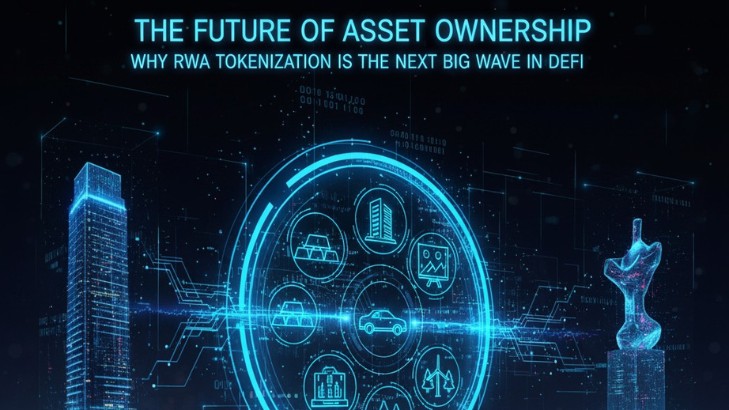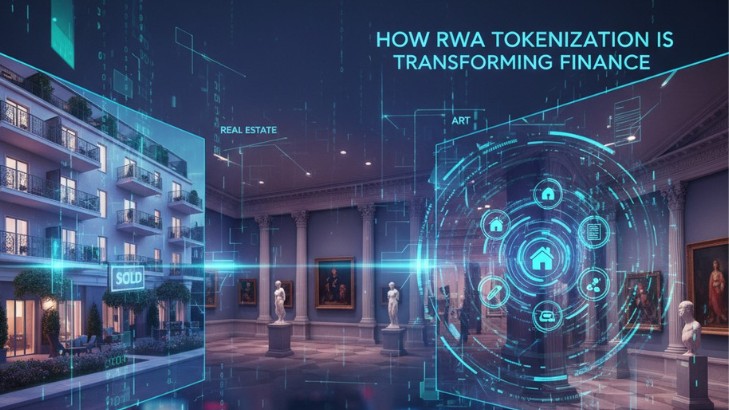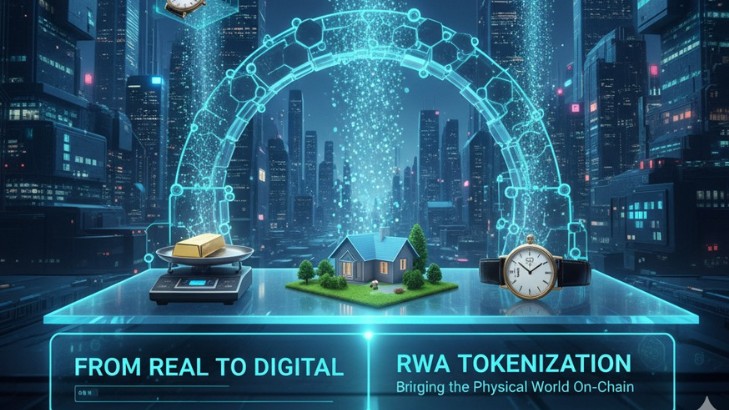The Emergence of Tokenization and Alternative Trading Systems (ATS) in the Financial Realm
November 6, 2023


%20in%20the%20Financial%20Realm.png)
Background
At its core, tokenization refers to the process of convert ingrights to an asset into a digital token on a blockchain source. Think of it as a digital representation of ownership. If previously, buying a piece of art meant having it physically, today, you could own a 'token' that represents a fraction or full ownership of that art. This digital metamorphosis is reinventing asset ownership, trading,and investment strategies.
On the other hand, Alternative Trading Systems (ATS) represent private, non-exchange trading platforms, allowing participants to find counterparties for transactions source. Essentially, they provide an alternative to traditional stock exchanges, serving as a bridge between buyers and sellers without the trappings of a formalized exchange system.
What is an Alternative Trading System (ATS)?
An ATS is, in essence, a trading system that matches buyers and sellers of financial instruments, but it doesn't have a traditional exchange's regulatory framework. They've existed in various forms for years, but with the rise of digital technologies, their prominence has grown significantly.
Key differences between ATS and traditional exchanges include:
- Regulatory Oversight: While both are subjected to regulations, traditional exchanges have more stringent rules, given their public nature. ATS, being private markets, often have a bit more leeway source.
- Transparency: Traditional exchanges mandate specific transparency requirements concerning order book and trade reporting. In contrast, ATS might not always offer the same degree of visibility.
- Market Dynamics: Traditional exchanges often cater to a broader audience, while ATS can be more niche, catering to specific types of investors or assets.
However, ATS is not without its challenges. It often requires significant technological infrastructure and robust regulatory compliance measures, even if they differ from those of traditional exchanges.
Tokenization Explained
Imagine you're eyeing a valuable piece of real estate or a renowned piece of art, but its price tag is way above your budget. In the traditional world, you'd probably move on. But in the digital age powered by blockchain,you can own a piece of that asset without buying it entirely. Welcome to the world of tokenization.
By breaking down assets into smaller, digital tokens on a blockchain,tokenization allows for fractional ownership. This means multiple investors can hold a piece of one single asset. These tokens can be traded, sold, or held, just like any other asset, but with the added benefits of the digital realm.
Some prominent benefits of tokenization include:
- Liquidity: Assets that were previously hard to divide or sell (like real estate or collectibles) become more liquid when tokenized source.
- Accessibility: Tokenization opens doors for smaller investors to access assets previously out of reach due to high entry barriers.
- Transparency: With assets on the blockchain, all transactions are recorded, ensuring transparency and reducing the chances of fraud.
Benefits of tokenization:
- Liquidity: Traditionally, assets like real estate or collectible art have been notoriously illiquid. By transforming these into tradeable tokens, they can be easily bought, sold, or traded on digital platforms, increasing their liquidity.
- Fractional Ownership: Perhaps one of tokenization's most groundbreaking features, it enables multiple investors to own fractions of a larger, more expensive asset. This democratizes investment, allowing smaller investors to have a stake in high-value assets.
- Transparency and Security: The decentralized nature of blockchain ensures all transactions are recorded transparently. This makes asset ownership and transfer more secure and reduces fraudulent activities. It also allows for easy verification of ownership and transaction history.
The Role of ATS in Tokenized Assets
With tokenization ushering in a new wave of digital assets, the need for platforms to facilitate their trade becomes paramount. This is where Alternative Trading Systems (ATS) come into play.
How ATS platforms can be used to trade tokenized assets:
ATS platforms, which operate outside traditional exchange systems, are perfectly positioned to handle the trading of tokenized assets. They can list various tokenized assets, match buyers with sellers, and execute trades without the need for intermediaries. Moreover, ATS can be customized to cater to the specific needs of tokenized assets, making them more adaptable than traditional exchanges.
Benefits of trading tokenized assets on ATS compared to traditional exchanges:
- Flexibility: ATS platforms offer a more flexible trading environment, often with reduced listing requirements for assets, making it easier for new types of tokenized products to gain market entry.
- Niche Markets: Many ATS platforms cater to specific market segments, allowing for targeted trading communities around certain types of tokenized assets.
- Reduced Costs: Without the middlemen and the infrastructure demanded by traditional exchanges, ATS can often offer reduced trading fees and costs.
Real-world Applications and Examples
Tokenized assets being traded on ATS platforms:
- Real Estate: Platforms like RealT offer tokenized real estate properties, showcasing the transformative potential of combining tokenization and ATS.
- Fine Art: Platforms such as Maecenas have allowed art enthusiasts to trade art-backed tokens on ATS, offering liquidity to a traditionally illiquid market.
Case studies of successful integrations of tokenization with ATS:
- CurioInvest: As detailed by CurioInvest’s platform, they democratize investment in collectible cars using tokenization. These tokens can then be traded on ATS platforms, showcasing the synergy between the two.
- Spice VC: Spice VC, a venture capital firm, turned to tokenization to provide fractional ownership in its investment portfolio. These tokens are traded on ATS platforms, further highlighting the seamless integration of the two concepts.
Challenges and Concerns
Tokenization and ATS, while revolutionary, aren't without their set of challenges. From regulatory hurdles to technological complexities, there's a spectrum of concerns to address.
Regulatory challenges specific to tokenized assets on ATS: Regulation remains a primary challenge. As the SEC highlights, tokenized assets often walk the line between securities and commodities. Navigating these definitions and ensuring compliance can be complex.
Potential risks and fraud concerns: Digital assets also open the door to potential fraud risks. The decentralized nature of blockchain, while a boon for transparency, can also be misused, as indicated by reports from the FBI. Ensuring the authenticity of tokenized assets and preventing fraudulent trading activities is vital.
Technological challenges: The integration of blockchain technology with ATS platforms requires robust technological infrastructure.Handling potential vulnerabilities, ensuring smooth transactional flow, and managing high trading volumes are concerns highlighted by Deloitte.
The Future of Tokenization and ATS
The amalgamation of tokenization and ATS holds transformative potential for the financial landscape. How might this union evolve?
Predictions about how the landscape might evolve: With advancements in blockchain technology and increased regulatory clarity, experts from Forbes predict a surge in the number of tokenized assets and their trade on ATS platforms.
Opportunities for growth and innovation: There's immense scope for innovation, from developing advanced ATS platforms tailored for specific tokenized asset categories to creating unique financial instruments based on these assets.
Conclusion
The nexus between tokenization and ATS is more than a fleeting financial trend. It embodies the progressive shift towards a more inclusive, transparent,and flexible financial ecosystem. With the right regulatory framework and technological advancements, the union promises a transformative impact on global financial markets.
Dive deeper into the world of tokenized assets on ATS platforms.Explore, invest, and be a part of this financial revolution. We invite your comments, insights, and feedback. If you found this article enlightening, consider sharing it in your network and fostering a more informed financial community.




.avif)



